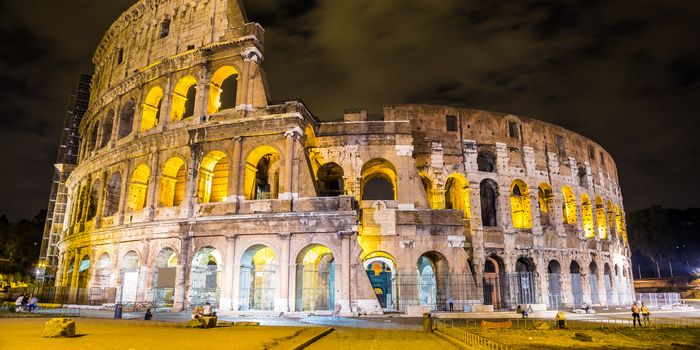
How Roman concrete mends cracks by itself

Roman concrete is considered to be particularly durable. Researchers have now discovered a possible cause that could also be helpful for today's problems.
The mighty buildings of Roman antiquity fascinate millions of tourists travelling to Italy every year. However, the buildings are not only relevant from a historical and aesthetic point of view. As a team of researchers led by Linda Seymour from the Massachusetts Institute of Technology has now discovered, knowledge about Roman concrete could provide articles for reducing today's CO2 emissions. Roman concrete consists of components that can seal cracks caused by chemical processes in the material, as the researchers write in the journal Science Advances.
For their study, the team took samples from the approximately 2000-year-old city wall of ancient Privernum, not far from Rome. They then analysed the concrete under an electron microscope and with the help of an X-ray and laser spectrometer in order to identify the individual components in the mixture. According to the researchers, the secret of the durable Roman concrete lies in the bright white chunks of lime that are typical of the material. The origin of these grains, which measure around one millimetre, is disputed; they may have been formed during the mixing of the material.
Global CO2 emissions could be reduced with "self-healing" concrete
For the "opus caementitium", the builders of antiquity usually mixed slaked lime (calcium hydroxide) - a building material produced by burning lime and then slaking it with water - with aggregates of volcanic origin, the pozzolans, and with water. Sometimes, however, the Romans also mixed dry burnt lime with volcanic ash and water. This process, which generates a great deal of heat in an exothermic reaction, presumably resulted in the white lime lumps in the concrete. When cracks and pores develop in the concrete over time and water can then penetrate the material, the liquid dissolves calcium from the lumps. The resulting calcium carbonate reacts with the volcanic ash in the concrete and fills the gaps again.
The comparison with a Roman-inspired but modern concrete confirmed the results of the research group. The process means that the concrete repairs cavities caused by the weather itself, which could explain the longevity and stability of ancient Roman buildings, some of which survived the millennia in remarkable quality.
But what benefits could the process have for the present day? The experts also have an answer to this question. Concrete production currently accounts for around eight per cent of global carbon dioxide emissions. According to the scientists, this not insignificant proportion could be reduced with "self-healing" concrete. Provided this sustainable and climate-friendly form of production becomes established in the construction industry in the long term.
Spectrum of science
We are a partner of Spektrum der Wissenschaft and want to make sound information more accessible to you. Follow Spektrum der Wissenschaft if you like the articles.
[[small:]]
Cover image: Shutterstock / The Colosseum in Rome, which was built between 72 and 80 AD, is made of a concrete-like material: «opus caementitium».


Experts from science and research report on the latest findings in their fields – competent, authentic and comprehensible.
From the new iPhone to the resurrection of 80s fashion. The editorial team categorises.
Show all